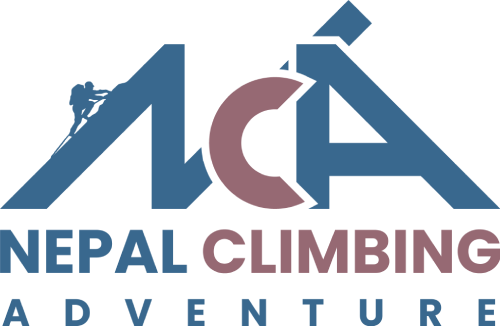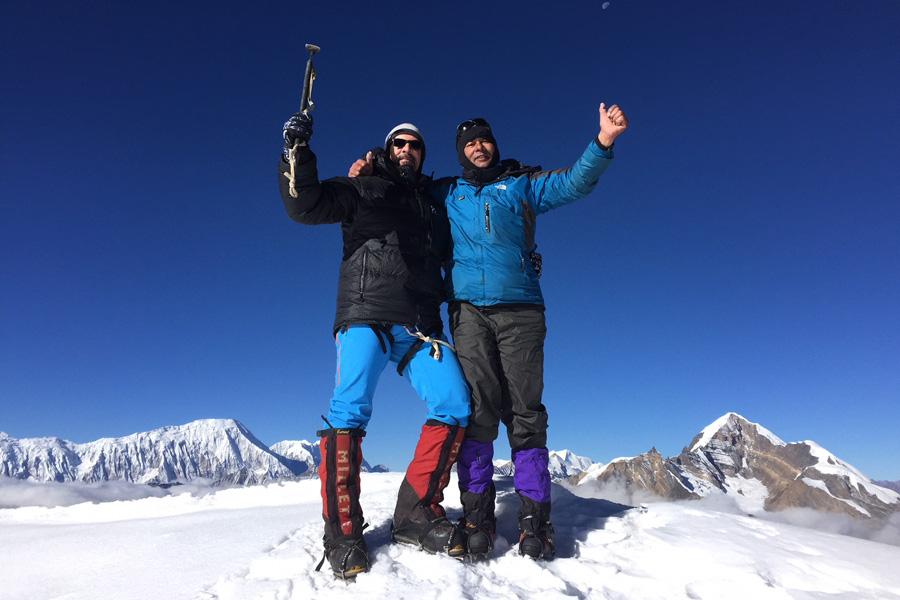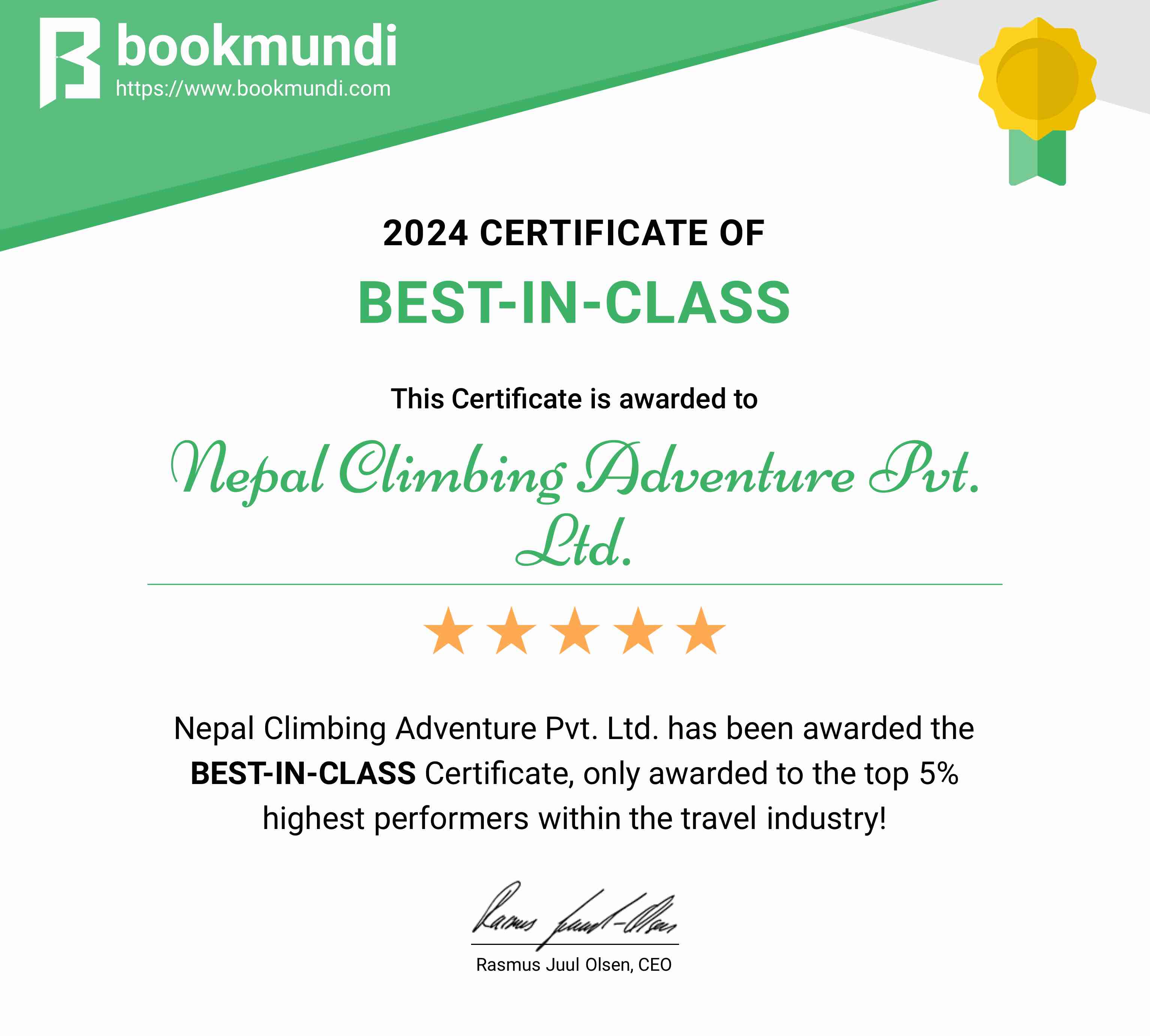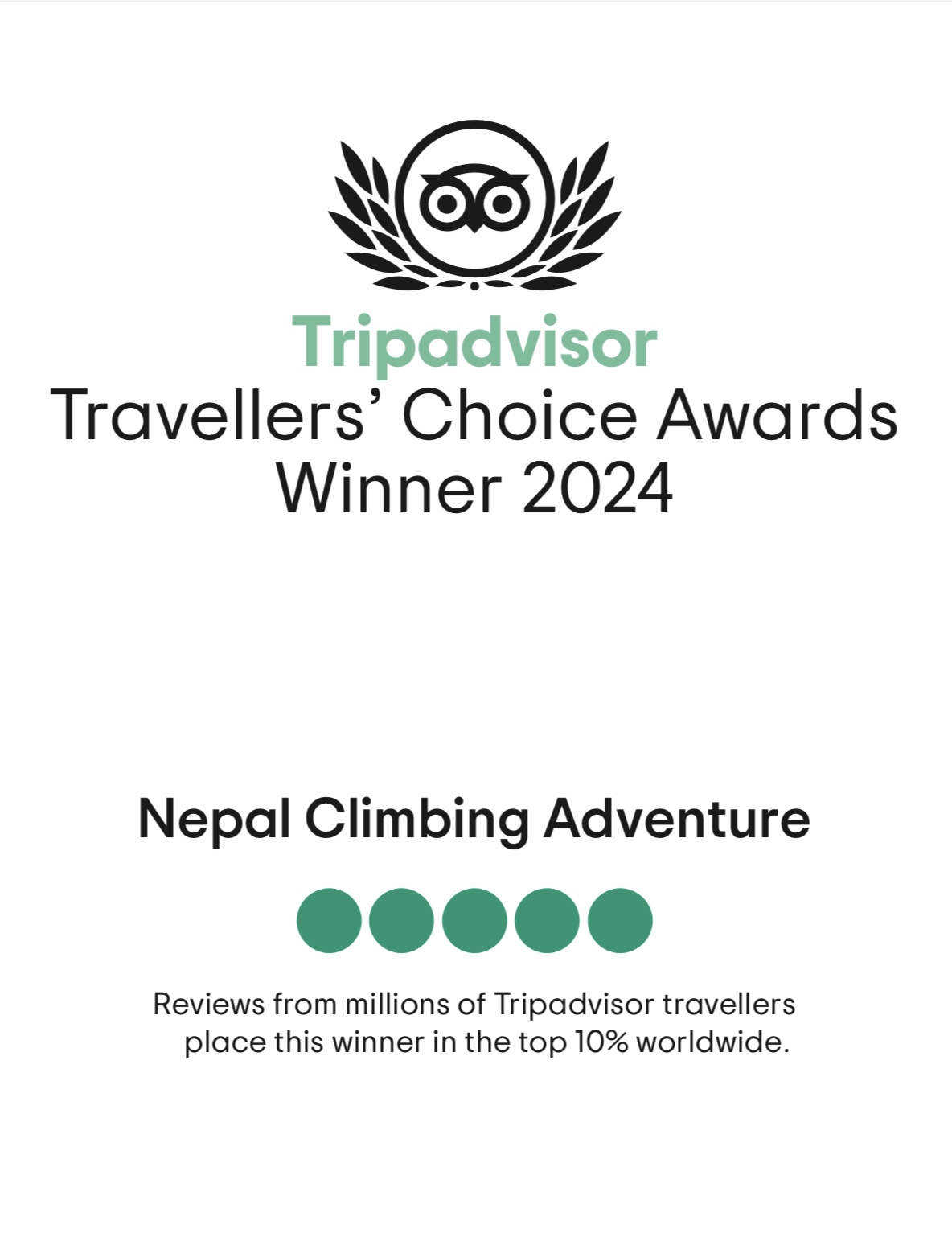Overview:
One of the famous climbing peaks in the Annapurna range of the Himalayas, Chulu West peak stands at an elevation of 6419 meters above sea level. Chulu West Peak Climbing adventure takes you to the north of Manang valley to climb the peak. A combination of trekking and climbing adventures, this trip offers you incredible views of the Himalayan surroundings. Chulu West Peak climbing difficulty level is high, calling for climbers to possess technical expertise, strong physical stamina, and experience in navigating glaciated terrain.
This chulu west trip takes you initially on a trekking adventure along the Annapurna Circuit Trek route up to Manang. It takes a different route towards Chulu West peak from Manang via Ledar. Trekking through the Marshyangdi river valley up towards the mountain takes you through several beautiful villages. You can also enjoy the breathtaking view of the Annapurna massif. Climbing Chulu East Peak poses a significant challenge, requiring advanced mountaineering abilities, experience at high elevations, and excellent fitness levels. The trek to Chulu East Peak Base Camp typically starts from the village of Chame, following the Annapurna Circuit trail.
What do you see during Chulu West Peak Climbing Adventure?
As this climbing chulu west peak adventure takes you to the Annapurna region of the Himalayas, you can enjoy the view of mountains in the region. Right from the beginning of the trek, you can see the mountains and beautiful nature. While traversing the trail along the Marshyangdi River valley, you will also walk past several beautiful villages.
When you reach Chulu West Peak base camp and start the climb to the summit, you will find yourself amidst the high-soaring mountains. The view you see from the summit of the peak is simply surreal. At chulu west you can enjoy breathtaking views, the climbing itself is also a thrilling adventure. You will need knowledge of mountain climbing skills to climb Chulu West Peak.
Chulu West Peak climbing in Nepal offers a demanding adventure that requires advanced mountaineering skills, prior high-altitude experience, and exceptional physical conditioning. Chulu Peak climbing adventure gives you an unforgettable peak climbing experience in the Annapurna region of the Himalaya. Later, after the chulu peak climb, you will also trek to Jomsom via Thorong La pass (5416m).
Reasons this trip becomes an Experience
Nepal Climbing Adventure always strives to offer an adventure traveling experience that you can cherish. While the Chulu West Peak Climbing Adventure is beautiful in its all essence, your experience of trekking there becomes even more beautiful with us.
By the time we take you to the base camp and bring you back, we take one step ahead to offer you a beautiful experience. During the chulu west peak climb, we keep your safety and happiness is our top priority and you will experience the same during the trip.
Trekking and climbing to Chulu West Peak with us is traveling in safe hands.
Highlights:
- Trek through beautiful Annapurna landscapes.
- Enjoy panoramic summit views of major peaks.
- Experience a challenging and rewarding climb.
- Navigate diverse terrain including glaciers and ridges.
- Meet local communities and learn about their culture.
- See a variety of Himalayan flora and fauna.
- Benefit from a gradual acclimatization process.
- Receive expert guidance and support.
- Stay comfortably at base camp and higher camps.
- Capture stunning mountain and valley photos.
How Difficult is Chulu West Peak Climbing?
Chulu West Peak climbing in Nepal is a challenging but rewarding adventure. Located in Nepal’s Annapurna region, this peak stands at 6,419 meters (21,055 feet). Chulu west peak climb is considered a high-altitude climb, demanding both physical fitness and technical skills. The trek to Chulu West involves a strenuous journey through rugged terrain. Climbers start from the town of Besishahar and follow the Annapurna Circuit. Chulu West Peak trek takes them through diverse landscapes, including lush forests, alpine meadows, and high-altitude deserts. Acclimatization is crucial due to the thin air at higher elevations. The Chulu West Peak climbing difficulty requires climbers to have substantial technical skills and previous experience with high-altitude expeditions.
Chulu Peak climb itself is technically demanding. While the chulu west peak ascent does not require advanced mountaineering skills, it involves using ice axes, crampons, and ropes. Climbers must be comfortable with steep and icy slopes. The weather can also be unpredictable, with strong winds and sudden snowstorms posing additional risks. Physical preparation is essential for Chulu West. Climbers need to be in excellent shape, with strong endurance and stamina. Regular cardiovascular and strength training can help build the necessary fitness. It is also helpful to have previous experience with high-altitude trekking or climbing. Chulu West Peak climbing difficulty level is considered challenging, requiring technical skills, high-altitude experience, and excellent physical fitness.
Safety is paramount. Climbers should be prepared for the physical demands and the potential hazards of high-altitude environments. Proper gear, including warm clothing, climbing equipment, and first-aid supplies, is essential. It is also important to follow the guidance of experienced guides and to acclimatize properly to avoid altitude sickness. Chulu West Peak climbing in Nepal offers stunning views and a sense of accomplishment. It is a challenging climb but manageable with adequate preparation and support. The experience is unforgettable for those who are well-prepared and ready for an adventurous journey.
When is the best time to do Chulu West Peak Climb?
The best time to climb Chulu West Peak is during the pre-monsoon (spring) and post-monsoon (autumn) seasons.
Pre-monsoon (Spring): From late April to early June, the weather is generally stable and clear. Temperatures are warmer, making it easier to climb. The skies are often clear, providing beautiful views of the mountains. This is a popular time for climbers as the conditions are favorable for reaching the summit. However, be prepared for occasional snowfall and wind.
Post-monsoon (Autumn): From late September to early November, the weather is also suitable for climbing. The monsoon rains have cleared, and the skies are usually clear. Temperatures are cooler but still manageable. This period is less crowded compared to spring, offering a quieter experience. It’s a good time to enjoy the stunning Himalayan views without the summer rain.
What permits are required to climb Chulu West Peak?
To climb Chulu West Peak, climbers need several permits to ensure they are legally authorized and prepared for their adventure. Here’s a simple breakdown of the required permits:
- Trekking Permit: Before heading to Chulu West Peak, trekkers must obtain the Annapurna Conservation Area Permit (ACAP). This permit allows access to the Annapurna region, where Chulu West is located. It helps in preserving the natural beauty and biodiversity of the area.
- TIMS Card: The Trekkers' Information Management System (TIMS) card is required for all trekkers in Nepal. It helps in tracking the movement of trekkers and ensuring their safety. This card is issued by the Nepal Tourism Board or trekking agencies.
- Climbing Permit: For Chulu West Peak, a specific climbing permit is required. This permit is issued by the Nepal Mountaineering Association (NMA). It is necessary for all peak climbing activities and ensures that climbers are following the regulations set for safety and environmental conservation.
- Guide and Porter: While not a permit, having a certified guide and porter is highly recommended. They help navigate the trekking route, provide support during the climb, and ensure a safe and enjoyable experience.
To obtain these permits for Chulu west peak climb, you can either apply directly through the relevant offices or through a registered trekking agency. The process typically involves filling out forms, paying fees, and providing necessary documentation, such as a passport copy and passport-sized photos. Remember, it’s essential to arrange these permits well in advance of your planned climb to avoid any last-minute issues. Having all the required permits not only ensures compliance with regulations but also contributes to the safety and success of your climb on Chulu West Peak.
Chulu West Peak Climbing Cost:
Chulu West Peak climbing in the Annapurna region of Nepal offers an exhilarating adventure, with costs ranging from USD 2,500 to USD 4,500 per person. The chulu west peak climbing price typically covers essential elements such as permits, accommodation, meals, guide and porter services, domestic flights, and logistical support. Permit fees are a significant part of the cost, with the Nepal Mountaineering Association (NMA) issuing these permits. Fees vary by season, with higher costs in spring, reflecting peak demand. The Annapurna Conservation Area Project (ACAP) entry fee is also included, contributing to environmental conservation efforts. Accommodation during the trek is generally in tea houses or lodges, providing basic amenities and meals.
The package often includes breakfast, lunch, and dinner, ensuring climbers are well-nourished. Essential climbing gear and equipment are also provided, either as rentals or included in the package. Guide and porter services are crucial, offering local knowledge and support. Their wages, insurance, and meals are covered in the cost, ensuring reliable assistance throughout the trek. Additionally, domestic flights, such as from Kathmandu to Pokhara, are included, facilitating access to the trailhead. The chulu west peak climbing cost covers a comprehensive package, ensuring a safe, well-supported, and memorable Himalayan adventure.
Outline Itinerary:
Day 01: Arrival in Kathmandu (1400m)
Day 02: Sightseeing Tour in Kathmandu
Day 03: Kathmandu – Chamje (1410m)
Day 04: Chamje – Dharapani (1860m)
Day 05: Dharapani – Chame (2650m)
Day 06: Chame – Pisang (3250m)
Day 07: Pisang – Manang (3519m)
Day 08: Manang Acclimatization Day
Day 9: Manang - Leder (4,200m)
Day 10: Ledar - Chulu West Base Camp (4,900m)
Day 11: Base Camp - Camp I (5,170m)
Day 12: Camp I Acclimatization
Day 13: Camp I - Camp II (5,400m)
Day 14: Camp II - Chulu West Summit (6,419m) - Camp I (5,170m)
Day 15: Camp I - Leder (4,900m)
Day 16: Contingency Day
Day 17: Yak Kharka – Thorong Phedi (4,540m)
Day 18: Thorong Phedi – Thorong La (5416m) – Muktinath (3800m)
Day 19: Muktinath – Jomsom (2743m)
Day 20: Jomsom – Pokhara (900m)
Day 21: Pokhara – Kathmandu
Day 22: Departure Day
Food and Accommodations During Chulu West Peak Climbing
During the Chulu West Peak expedition, food and accommodations are essential for a comfortable and enjoyable experience. The chulu west peak climbing from Kathmandu, where you can stay in comfortable hotels that offer a variety of meals. These hotels cater to different tastes and provide a good start to your adventure. As you move into the trekking regions of Chulu Peak, accommodations are typically in lodges or tea houses. These are basic but cozy, offering a warm place to rest after a day of climbing. The lodges provide essential amenities like a bed with a warm blanket and a shared bathroom. The food along the chulu west peak climb is generally simple but nutritious. In the lower altitudes, you can enjoy a mix of local Nepali dishes and international options. Common meals include dal bhat (rice and lentil soup), noodles, soups, and vegetables.
As you ascend to higher altitudes, the menu becomes more limited due to the challenges of transporting supplies. However, you will still find a range of hearty meals designed to keep you energized. In the high-altitude camps, the focus shifts to high-energy foods to help with acclimatization. You might have meals like porridge, pasta, and stews. Although the food options might be more limited, the emphasis is on providing sustenance and warmth. While the accommodations are basic, they are adequate for the adventure. The food is designed to support your trek, providing necessary nutrition and energy. The hospitality of the local staff adds to the overall positive experience of Chulu West Peak trek.What is included?
- All airport and hotel transfers
- Welcome and farewell dinner
- Overland transportation by tourist bus
- Basic teahouse and camping accommodation and meals during the trek and climbing.
- 3 nights in a 3-star hotel in Kathmandu
- 1 Night Hotel accommodation in Pokhara
- All necessary paper works and permits
- Government and local taxes
- An experienced English speaking trekking and climbing guide, assistant trek guide(4 trekkers: 1 assistant guide), porters(2 trekkers: 1 porter) including their salary, insurance, food, lodging, and all equipment.
- A comprehensive medical kit
What is not included?
- Nepal Visa fee(bring small denomination cash USD and two passport photographs)
- International airfare
- Excess baggage charges
- Extra night accommodation apart from the schedule due to any reasons
- Lunch and evening meals in Kathmandu and in case of early return than the scheduled chulu west peak climbing itinerary
- Travel and rescue insurance
- Personal expenses
- Tips for travel guides or porters
There are a number of things that you need to keep in mind if you ever plan for your vacation. Because you want to make the most out of your limited time, it is truly a hectic job for you to find a trustworthy and experienced traveling companion. With Nepal Climbing, you have your problem solved already as we are one of the leading Trekking and Mountaineering organizations in Nepal and have been providing first class service in several travelling packages across the country for many years.
We prioritize your satisfaction and safety
At Nepal Climbing Adventure, our ultimate objective is to arrange the programs for you to make the most out of your valuable time. We value your satisfaction, adventure, amusement and safety. Regardless of whether you are searching for stunning perspectives along the trekking trails in Himalayan mountain range or widely acclaimed, heavenly attractions with developed societies, our exposure and experience in travel business will help you ensure your requirements are met.
We have professional staffs and service
We trust that extraordinary staff lead awesome administration. That is the reason we are collaborated with experienced and eager individuals. We possess authorized and government certified guides who are very much furnished with broad learning of Nepali communities and traditions. They additionally have familiar English speaking abilities and hierarchical capacities to encourage all types trekking groups.
Responsible Tourism and social values
We are endeavoring to lessen the effect of tourism by guaranteeing our staff are very much aware of ecological issues. We are doing our best to create less waste as could be expected under the circumstances and make a point to reclaim non-compostable wastes. We outline our itineraries and work in the field guided by the standards of ecotourism and reasonable tourism. Moreover, all our staff have been given ecological preparing and are extremely aware to the eco-system we enter. Additionally, we are adhering to sustainable assets of energy. Our guides will share you the social values, culture and religious harmony for better understanding the groups you visit.
Customizable Service
Our promise is to provide you with the travelling packages customizable according to your demand fulfilling your budget criteria. So, we can facilitate a minimum of 2 individuals with a personalized service at a reasonable cost.
Online Payment
Or
WIRE TRANSFER
Bank Details:
Account Holder's Name: Nepal Climbing Adventure Pvt. Ltd.
Bank Name: Himalayan Bank Ltd.
Account Number: 01907449340018
Account Type: USD
Address: Thamel, Kathmandu, Nepal
SWIFT CODE: HIMANPKA
For more detail contact us:
Krishna Subedi (Chris Chhetri): +977 9851076791 (24/7, Call/Viber/Watsapp)
We recommend our guests have a valid insurance policy before undertaking an adventure in Nepal Himalaya. During treks and expeditions, the insurance should cover for expenses such as air ambulance, helicopter rescue, and medical care. As an adventure operator, we (NCA), are not permitted to arrange or sell insurance packages here in Nepal as per the Government of Nepal.
Packing List:
Here's a packing list for Chulu West Peak climbing, which combines trekking and climbing gear with essentials for high-altitude conditions:
Climbing Gear:
- Climbing Harness: For safety and attaching gear.
- Helmet: To protect your head from falling debris.
- Crampons: Essential for ice and snow conditions.
- Ice Axe: Useful for climbing steep icy slopes.
- Climbing Ropes: For safety and assistance during Chulu west peak ascent.
- Carabiners & Slings: For attaching gear and safety.
- Ascenders/Descenders: For climbing ropes and rappelling.
- Climbing Gloves: Insulated gloves suitable for climbing.
- Snow Goggles: To protect eyes from snow glare and wind.
High-Altitude Gear:
- Down Jacket: For insulation in cold temperatures.
- Base Layers: Thermal underwear for warmth.
- Fleece Jacket: Additional layer for insulation.
- Insulated Pants: For cold weather protection.
- Waterproof Jacket & Pants: For protection against rain and wind.
- Warm Hat: For head and face warmth.
- Neck Gaiter: To protect your neck from cold winds.
Footwear:
- Mountaineering Boots: Insulated, waterproof boots suitable for ice and snow.
- Gaiters: To prevent snow and water from entering your boots.
- Trekking Shoes: For lower-altitude trekking and camp use.
- Warm Socks: Several pairs of thermal and moisture-wicking socks.
Camping Gear:
- Sleeping Bag: Rated for high-altitude conditions (down or synthetic).
- Sleeping Pad: For insulation and comfort on the ground.
- Tent: Four-season tent for high-altitude conditions.
- Stove & Fuel: For cooking and melting snow for water.
- Cookware: Lightweight pots, pans, and utensils.
- Water Bottles or Hydration System: Insulated to prevent freezing.
Personal Items:
- Sunglasses: UV protection for high-altitude glare.
- Sunblock & Lip Balm: High SPF for skin protection.
- First Aid Kit: Basic medical supplies and altitude sickness medication.
- Personal Hygiene Items: Toothbrush, toothpaste, and other essentials.
- Headlamp/Flashlight: With extra batteries.
- Camera & Spare Batteries: For capturing memories.
- Water Purification Tablets: In case of emergency.
Documents & Extras:
- Passport & Visa: Necessary travel documents.
- Travel Insurance: Including coverage for climbing and high-altitude activities.
- Permits: Required climbing and trekking permits.
- Map & Compass/GPS: For navigation.
Food & Snacks:
- Energy Bars & Snacks: For quick energy during climbs.
- High-Calorie Meals: For high-altitude nourishment.
Frequently Asked Questions (FAQ’s)
1. Which is the easiest summit to climb in Nepal?
One of the easiest summits to climb in Nepal is the Chulu West Peak. This peak is popular among climbers due to its relatively accessible routes and the breathtaking views it offers of the Annapurna and Dhaulagiri ranges. Despite being considered more approachable, it still provides a thrilling adventure for both novice and experienced mountaineers.
2. What is the easiest high peak to climb?
The easiest high peak to climb in Nepal is often considered to be Chulu West Peak. Its relatively straightforward routes and moderate technical challenges make it accessible for climbers with some experience in high-altitude trekking and basic mountaineering skills. The peak offers stunning panoramic views of the Annapurna and Dhaulagiri ranges, making the climb rewarding and memorable.
3. Is climbing long peaks dangerous?
Climbing long peaks can be dangerous due to several factors such as extreme altitude, unpredictable weather conditions, and technical climbing challenges. Risks include altitude sickness, avalanches, and severe weather changes. Proper acclimatization, physical fitness, and thorough preparation are essential to mitigate these dangers and ensure a safer climbing experience.
4. What is the altitude of Chulu West peak?
The altitude of Chulu West Peak is approximately 6,419 meters (21,055 feet). This high-altitude peak is part of the Annapurna range in Nepal and offers climbers a challenging but rewarding experience with stunning views of the surrounding Himalayan mountains.
5. Are there high level toilet facilities in the Chulu West Peak venture?
High-level toilet facilities are generally limited in the Chulu West Peak venture. Most accommodations, such as teahouses and lodges along the trekking route, offer basic toilet facilities. At higher altitudes and base camps, climbers may need to rely on more rudimentary options, such as pit toilets or portable toilet tents. It's important for climbers to be prepared for these conditions and practice responsible waste management.
6. What is the difference between Chulu East and Chulu West?
Chulu East and Chulu West are both peaks in the Annapurna region of Nepal, but they differ in several ways:
- Altitude: Chulu West Peak stands at approximately 6,419 meters (21,055 feet), while Chulu East Peak is slightly lower at around 6,584 meters (21,600 feet).
- Climbing Route: Chulu West typically has a less technical and more accessible route compared to Chulu East. Chulu East often requires more advanced climbing skills and involves steeper terrain.
- Scenic Views: Both peaks offer stunning views, but Chulu East generally provides broader panoramas of the Annapurna and Dhaulagiri ranges due to its higher elevation.
- Popularity: Chulu West is considered a bit more popular among climbers due to its relatively easier ascent and slightly lower altitude. Chulu East attracts those seeking a more challenging climb.
7. Can we rent equipment while climbing Chulu west?
Yes, you can rent climbing equipment for Chulu West Peak from trekking and mountaineering gear shops in Kathmandu or Pokhara. Most rental services offer a range of equipment including crampons, ice axes, harnesses, and climbing boots. It's advisable to check the condition of the gear and ensure it meets safety standards before setting out. Many organized trekking agencies also provide rental services as part of their package, so it's worth inquiring with your tour operator.
8. What is the easiest peak to climb in the Himalayas?
In the Himalayas, Island Peak (Imja Tse) is often considered one of the easier peaks to climb. At 6,189 meters (20,305 feet), it provides a manageable ascent with relatively straightforward climbing routes compared to more challenging peaks. The climb involves basic ice and snow techniques, making it accessible for climbers with some mountaineering experience. It also offers spectacular views of Everest and surrounding peaks, making it a popular choice for those looking for a high-altitude adventure without the extreme difficulty of other Himalayan summits.
9. What are the top 3 highest peaks of the Himalayas?
The top three highest peaks of the Himalayas are:
- Mount Everest: At 8,848.86 meters (29,031.7 feet), Mount Everest is the highest peak in the world and is located on the border between Nepal and the Tibet Autonomous Region of China.
- Kangchenjunga: Standing at 8,586 meters (28,169 feet), Kanchenjunga is the second-highest peak and lies on the border between Nepal and the Indian state of Sikkim.
- Kangchenjunga: At 8,516 meters (27,940 feet), K2 is the second-highest peak in the Himalayas and is situated on the border between Pakistan and China.
10. What are the cheapest mountains to climb in Nepal?
In Nepal, some of the more affordable mountains to climb, primarily due to lower permit fees and fewer technical challenges, include:
- Island Peak (Imja Tse): At 6,189 meters (20,305 feet), Island Peak is one of the more accessible high peaks and has relatively lower permit costs compared to the higher peaks.
- Mera Peak: Standing at 6,310 meters (20,700 feet), Mera Peak is another popular peak with a relatively straightforward climb and lower permit fees.
- Yala Peak: At 5,732 meters (18,807 feet), Yala Peak is a less technical climb and is part of the Langtang region, which tends to be more affordable compared to other regions.





















 Chris Chhetri
Chris Chhetri